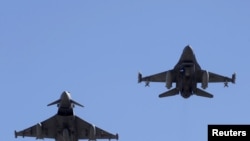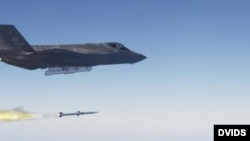On October 18, the Russian news agency TASS quoted Russian Foreign Minister Sergei Lavrov bemoaning the lack of dialogue between Russia and NATO, which he suggested was responsible for an increase in “unintended incidents.” As an example of these incidents, he cited the instance when a Spanish Eurofighter accidentally fired an AIM-120 AMRAAM air-to-air missile during a NATO exercise over Estonia. He rhetorically asked what might have happened had the missile landed in Russian territory, stating that it was “very close.”
Lavrov’s quotes were picked up and repeated in a headline on November 6 by New Eastern Europe magazine, which is an independent non-profit publication based in Krakow, Poland. It quoted an unnamed European defense official as saying that the missile’s tracking radar was not activated, meaning the pilot supposedly could not engage its self-destruct mechanism (a feature of the AMRAAM). Apart from this anonymous source, the magazine provided no other information to back this assertion. Some reports have indicated that the missile may have in fact self-destructed.
Radio Free Europe quoted Estonian Prime Minister Juri Ratas as saying on Facebook "thank God" there were "no human casualties" due to this "startling incident," which he called "extremely regrettable."
The New Eastern Europe article did note that the missile was thought to have landed north of the Estonian city of Tartu, meaning that even if the self-destruct system was not engaged, it’s very unlikely that the missile would have reached Russian territory. The Russian side of the border in the area within the missile’s max range is sparsely populated, and the large Lake Peipus takes up much of that area.
Additionally, the U.S. Air Force's specifications for the missile indicate it has a range of 20 miles.The Spanish jet was approximately more than 30 miles from Russian territory at the time, further evidence that the accidental firing of the missile posed no threat to Russians or Russian territory.
As such, it would seem Lavrov has very little to worry about, though his concern about the need for Russia-NATO communication to avoid misunderstandings, if it is lacking, would certainly be reasonable.







